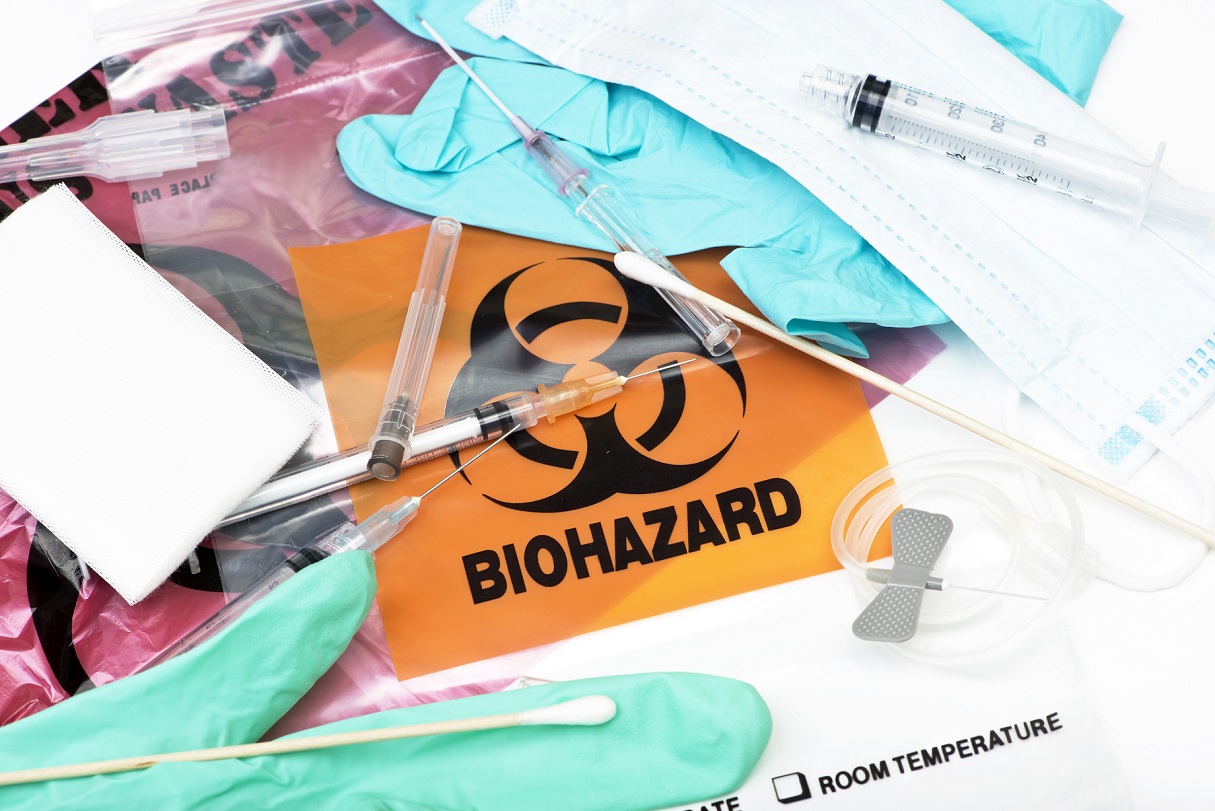Managing Medical Waste – Toxicity concerns are considerable when it comes to managing medical waste, the number of waste streams generated in facilities that produce medical waste can be very large.
Each waste stream – whether hazardous, solid waste, universal, pharmaceutical, chemotherapy or another stream – may have its own set of requirements for disposal. Volumes of the waste can also determine the disposal method.
Managing Medical Waste in Hospitals, research facilities, pharmacies, nursing homes and other type of healthcare institutions requires a proper medical waste disposal plan.
The waste generator is responsible for all aspects of the process of managing medical waste within their facility, from the point of creation to the final disposal, cradle to grave waste tracking is required under the Resource Conservation and Recovery Act (RCRA) and failure to implement this level of tracking can result in substantial fines and penalties.
Treatment And Disposal:
Part of managing medical waste is the actual treatment of the medical waste to ensure that infectious waste, potentially infectious materials or toxic items do not seep into the soil or nearby water sources at landfills and create a risk to the environment and the general public.
Some of the treatments being used today include:
Chemical disinfection – is usually reserved for chemical and liquid waste. Chlorine is a common chemical used during this process. The types of microorganisms in the waste and how contaminated the product is determines whether this is an effective choice for sterilization.
Incineration – typically used as a disposal method for pathological waste and pharmaceutical waste. During this process, medical waste incinerators reach temperatures as hot as 2,000 degrees F.
Autoclaving – provides sterilization through steam. Though autoclaving is a good solution for sterilizing microbiological wastes, it is not an appropriate solution for other types of waste such as pathological and toxic chemicals.
Irradiative sterilization – uses the same technology as microwaves to disinfect waste. Waste is shredded and mixed with water. The waste is then heated so that all biological elements are neutralized.
In some US states such as California, Trace chemotherapy waste is permitted to undergo the incineration process.
Recycling:
Certain kinds of medical waste can be disposed of through recycling. Although most items one would think of as “medical” must go through special procedures for disposal, there are several items found in medical, pharmaceutical and research facilities that can simply be recycled.
For example:
• Office paper and cardboard
• Aluminum and steel cans and other food containers
• Glass bottles
• Plastic containers
The World Health Organization (WHO) points out that 85% of all the waste produced by healthcare activities is non-hazardous.
In addition other items found in medical facilities are the same as those found in many facilities, for example:
• Fluorescent lights
• Batteries
• Electronic devices
• Non-empty aerosol cans
IMEC Technologies provides Safety Management Software to increase worker safety and aid compliance. IMEC’s Safety Management Software will manage inspections and audits, provides hazard identification, incident reporting, management of corrective and preventative actions from generation to closure. IMEC provides lock out tag out software solutions that will allow users to create lockout tagout procedures using an intuitive Mobile App and Manage Lockout Tagout Procedures, also the Review and Execution of those Lockout Tagout Procedures using the Mobile App. Annual Lockout Tagout Procedures audits are conducted using a Mobile App. The Mobile Inspection App allow users to perform inspections and audits, for example the system can be used as a Fire Extinguisher Barcode Inspection Software system to manage monthly fire extinguisher inspections and general fire safety inspections and also to record safety observations and manage corrective actions, anywhere and anytime. The solution can be used as a fire extinguisher barcode inspection software system or life safety inspection system to aid compliance in Higher Education, Healthcare, Industrial and Commercial Organizations. Benefits from a Fire Extinguisher Barcode System include the elimination of paperwork and reducing the burden of compliance with regulations such as NFPA, The Joint Commission. The Incident Reporting App allows users to easily and quickly report incidents, hazards and near-misses, these are then sent to the appropriate people for action and are managed to closure. Web Apps provide features such as, setup, management, scheduling tools, analysis, reporting and dashboards etc with the ability to report incidents to government bodies such as OSHA and RIDDOR. HazMat T&T is a hazardous waste management software solution designed for Environmental Service Companies and companies who generate a large quantity of hazardous waste. The solution tracks hazardous waste from cradle to grave aiding compliance, providing accurate waste inventory, increasing waste handling efficiency, reducing risk and also helps manage waste costs. HazMat T&T Hazardous Waste Management Software can be deployed in a number of deployment scenarios, from Large Hazardous Waste Generators, tracking their hazardous waste at their site to Environmental Service and Waste Management Companies using it track and manage hazardous waste at transfer and disposal sites. For more information visit our website www.imectechnologies.com

